Imagine your customers booking a plumber, electrician, or deep cleaning service right from their phones, no calls, no waiting, just a few taps. With the rising demand for on-demand services, building an app that connects users with trusted professionals has become a smart business move.
That’s exactly what platforms like Handy have made possible, and it’s why more entrepreneurs are now looking to build similar service apps.
But before you jump in, one of the most common questions is “How much does it cost to create an app like Handy?”
Whether you're planning a basic MVP or a full-featured app, the cost to create a handyman app like Handy typically ranges from $25,000 to $80,000, depending on your app’s features, complexity, and the development team you hire.
In this blog, we’ll break down everything you need to know about the cost to develop a home cleaning service app like Handy, from the key cost factors to tips that help you save on development without compromising on quality.
The Rise of Handy: From Startup to Home Service Giant
Oisin Hanrahan, Umang Dua, Weina Scott, and Ignacio Leonhardt established Handy, which was initially called Handybook, in 2012. The company originated in Cambridge, Massachusetts, but eventually relocated its headquarters to New York City.
Handy began as a booking platform for handymen and cleaning services, with the goal of making it easier to identify and hire home service professionals. During its early years, Handy received considerable money to grow.
By 2014, its company had secured $30 million in a Series B financing headed by Revolution Growth, allowing it to expand into 26 cities throughout North America, including Vancouver and Toronto. At the time, Handy was arranging around 10,000 jobs each week.
Handybook relaunched as Handy in September 2014 and acquired Mopp, a London-based home services firm, to expand its footprint in the UK market. By June 2015, Handy had completed over one million bookings on its site.
Handy was bought by ANGI Homeservices, the parent company of HomeAdvisor and Angie's List, in October 2018, strengthening its position in the home services sector even more.
Handy now operates in the United States, Canada, and the United Kingdom, providing services in a variety of cities. The company has more than 400,000 downloads and an expected revenue of $365 million.
Handy's rise from startup to dominant home services platform exemplifies the possibilities of on-demand service applications in today's market. Its success story inspires entrepreneurs who want to create similar applications.
Handy’s impressive growth story inspires many entrepreneurs to dive into the home service app space. If you're wondering what it takes in terms of investment, let’s break down the cost to create an app like Handy and what factors influence it.
How Much Does It Cost to Develop an App Like Handy?
If you're planning to build a home service app and wondering how much it costs to develop an app like Handy, the answer depends on several factors.
These include the features you want, the complexity of the app, your chosen development partner, and the platform (iOS, Android, or both). On average, the cost to create an app like Handy ranges from $25,000 to $80,000.
At the basic level, if you're only including essential features like user registration, service booking, payment integration, and reviews, the cost could be closer to $25,000–$40,000.
However, if you plan to build more advanced features like real-time tracking, in-app chat, dynamic pricing, or multi-language support, then the cost to create an app like Handy may go upwards of $60,000–$80,000.
Here’s a quick breakdown:
-
- MVP Version: $25,000 – $40,000
- Mid-Level App: $40,000 – $60,000
- Full-Scale App with Advanced Features: $60,000 – $80,000+
The Handy-like app development cost also depends on whether you are hiring a freelance team, an in-house team, or partnering with the best mobile app development company. A professional team can guide you through the complete process from planning and design to development and deployment.
So if you're looking to build a handyman app, it’s best to get a custom quote based on your unique business goals.
Behind the Budget: Key Factors That Affect Handy Clone App Development Cost
When planning to create a handyman or home service app like Handy, it’s crucial to understand the factors that drive the overall cost.
Whether you are developing a basic MVP or a feature-rich Handy clone, each decision you make can significantly influence the total budget.

Let’s break down the eight most important cost-driving elements:
1. App Features and Functionalities
The breadth and complexity of the handyman app features you include play a major role in the overall cost to create an app like Handy.
Basic features like user registration, service listings, booking management, and payment gateways will cost considerably less than more advanced functionalities.
The more complex the feature, the more development hours are required, which directly impacts the cost to develop an app similar to Handy.
|
Feature |
Description |
Estimated Cost (USD) |
|
User Registration & Profiles |
Allows users and service providers to sign up, log in, and manage profiles. |
$2,000 – $4,000 |
|
Service Listings & Categories |
Displays various home services like plumbing, cleaning, or repairs with filters. |
$3,000 – $5,000 |
|
Real-time Booking System |
Users can schedule, reschedule, or cancel appointments through a calendar view. |
$4,000 – $7,000 |
|
In-app Payments & Wallets |
Integrates secure payment gateways and offers wallet options for easy checkout. |
$3,000 – $6,000 |
|
Ratings & Reviews |
Users can rate and review services and providers after job completion. |
$1,500 – $3,000 |
|
Geo-location & Tracking |
Helps users track nearby professionals and allows real-time location updates. |
$5,000 – $8,000 |
2. Platform Selection: Android, iOS, or Both
The platform you choose affects the handyman app development cost and time. Building a native app for Android and iOS separately will essentially double the work, increasing the cost to build an app like Handy.
Alternatively, using cross-platform frameworks like React Native or Flutter can help reduce time and budget while maintaining functionality. However, cross-platform solutions might limit some native capabilities.
|
Platform Option |
Description |
Estimated Cost (USD) |
|
Android (Native) |
App built specifically for Android using Java/Kotlin. Optimized for Android devices only. |
$15,000 – $30,000 |
|
iOS (Native) |
App built for iOS using Swift/Objective-C. Optimized for Apple devices. |
$15,000 – $30,000 |
|
Both (Native) |
Separate native apps built for Android and iOS. Best performance and full native features. |
$30,000 – $60,000 |
|
Cross-Platform |
Single codebase for both platforms using Flutter/React Native. Faster, cost-effective. |
$20,000 – $40,000 |
3. UI/UX Design
Design matters more than most people think. A well-designed interface that is intuitive, modern, and easy to navigate can boost user retention and satisfaction.
Handy is known for its sleek, minimalist design, and replicating or improving that experience will require investing in quality designers.
Custom animations, branded illustrations, responsive designs, and accessibility features all increase the cost to develop a handyman app like Handy, but they also add long-term value.
|
Design Element |
Description |
Estimated Cost (USD) |
|
UI/UX Design |
Core layout, user journey mapping, wireframes, and prototypes. Essential for smooth app navigation. |
$4,000 – $8,000 |
|
Custom Visuals |
Branded illustrations, unique icons, and color palettes to enhance app identity and appeal. |
$1,500 – $3,000 |
|
Responsive Design |
Ensures the app works across various screen sizes and devices. |
$1,000 – $2,500 |
|
Accessibility Features |
Features for users with disabilities (e.g., larger text, voice navigation, high contrast modes). |
$1,000 – $2,000 |
|
Micro-interactions |
Small animations that guide user actions and provide feedback (e.g., loading animations, tap effects). |
$800 – $2,000 |
|
Advanced UI Animations |
Fluid transitions, interactive graphics, and high-end visual effects that elevate the user experience. |
$2,000 – $5,000 |
4. Backend Development and Architecture
Behind every functional app lies a powerful backend.
This includes servers, APIs, databases, cloud services, and administrative dashboards. A scalable backend allows you to support thousands of users and service providers simultaneously.
The architecture should also include features like secure user authentication, Data encryption, real-time analytics, etc. These functionalities make the cost to create a home cleaning service app like Handy higher, but ensure performance, security, and reliability.
|
Backend Component |
Description |
Estimated Cost (USD) |
|
Server Infrastructure |
Hosts the app's data, handles user requests, and processes operations in real time. Cloud services like AWS or Google Cloud are commonly used. |
$3,000 – $7,000 |
|
Database Management |
Stores and retrieves user data, bookings, payments, and service details securely and efficiently. |
$2,000 – $5,000 |
|
API Integrations |
APIs connect your app to third-party services like payment gateways, SMS, email, and maps. |
$1,500 – $4,000 |
|
Admin Dashboard |
A control panel to manage users, providers, services, and analytics. Enables real-time monitoring. |
$2,000 – $6,000 |
|
Scalability Architecture |
Ensures the app can handle growing traffic and data without performance issues. |
$1,500 – $4,000 |
|
User Authentication & Security |
Implements secure login, encrypted data transmission, and protection against threats. |
$2,000 – $5,000 |
|
Real-Time Analytics |
Tracks usage, booking trends, and customer behavior for business insights. |
$1,500 – $3,500 |
|
Cloud Storage Solutions |
For storing documents, user uploads, invoices, etc., while ensuring fast and reliable access. |
$1,000 – $3,000 |
5. Third-Party Integrations
To build a mobile app with enhanced functionality and user experience, integrating third-party services is essential.
Common integrations include adding licensing fees and development time, increasing the cost to develop a home service app like Handy.
|
Third-Party Integration |
Description |
Estimated Cost (USD) |
|
Payment Gateway (Stripe/PayPal) |
Allows secure transactions for services, bookings, and subscriptions. Common gateways include Stripe, PayPal, and Razorpay. |
$1,000 – $3,000 |
|
Geolocation Services (Google Maps) |
It provides location tracking for service providers and users and helps with route optimization and service area identification. |
$1,500 – $4,000 |
|
SMS/Email Notifications (Twilio) |
Sends updates, reminders, and promotional messages to users and service providers. |
$500 – $1,500 |
|
Push Notification Services (OneSignal) |
Enables real-time notifications for service updates, promotions, or new offers. |
$500 – $1,000 |
|
Cloud Storage (AWS, Google Cloud) |
Stores user data, service records, and other media files securely, with fast access for users and admins. |
$1,000 – $3,500 |
|
Analytics (Google Analytics, Mixpanel) |
Tracks user behavior, bookings, and app engagement, providing valuable insights for business decisions. |
$500 – $2,000 |
|
Social Media Login (Facebook, Google) |
Allows users to log in with their social media accounts for easier access and improved UX. |
$500 – $1,500 |
|
Ratings & Reviews System |
A system to gather feedback from users and service providers, helping to improve trust and service quality. |
$1,000 – $3,000 |
6. Location and Experience of the Development Team
The location and experience of the on-demand app development company play a significant role in the overall cost to develop an app like Handy. Different regions around the world have varying labor rates, which can have a major impact on the budget.
For example, hiring a team in India or Eastern Europe will reduce the overall budget, enabling businesses to create a handyman app like Handy at a more affordable price.
|
Country |
Average Hourly Rate |
Estimated Cost (USD) |
|
US/Canada |
$100 – $200 |
$200,000 – $600,000 |
|
UK |
$60 – $150 |
$120,000 – $450,000 |
|
Eastern Europe |
$40 – $100 |
$80,000 – $300,000 |
|
India |
$20 – $50 |
$40,000 – $150,000 |
|
South America |
$30 – $80 |
$60,000 – $240,000 |
7. Testing and Quality Assurance (QA)
No matter how well your app is developed, it must go through thorough app testing and quality assurance (QA) to ensure everything runs smoothly.
QA helps detect and fix bugs, usability issues, and security flaws that could otherwise ruin the user experience or damage your reputation.
Though this process adds to the overall cost to develop an app like Handy, it's essential to maintain long-term app quality and performance. A properly tested app will reduce post-launch issues, minimize negative reviews, and improve retention rates.
|
QA Type |
Purpose |
Estimated Cost (USD) |
|
Manual Testing |
Tests the app’s look, feel, and usability manually |
$3,000 – $6,000 |
|
Automated Testing |
Ensures consistent performance under varying conditions |
$4,000 – $8,000 |
|
Security Testing |
Identifies vulnerabilities and protects user data |
$2,000 – $5,000 |
|
Regression Testing |
Checks if new updates affect existing features |
$2,500 – $6,000 |
|
Load/Stress Testing |
Measures app behavior under heavy user load |
$3,000 – $7,000 |
8. Maintenance and Post-Launch Support
Launching your app is just the beginning. Regular updates, bug fixes, security patches, and new feature additions are essential for long-term success.
Many companies offer maintenance packages post-launch. This ongoing maintenance cost might be 15-20% of the initial development budget annually, and it’s a critical factor when estimating the Handy clone app development cost.
|
Maintenance Task |
Description |
Estimated Annual Cost |
|
Regular Updates |
Version upgrades, OS compatibility updates, and new features |
$3,000 – $8,000 |
|
Bug Fixes |
Identifying and resolving bugs or glitches reported by users |
$1,000 – $3,000 |
|
Security Patches |
Addressing vulnerabilities, securing user data and transactions |
$1,500 – $4,000 |
|
Performance Optimization |
Improving speed, responsiveness, and server handling |
$2,000 – $5,000 |
|
Third-Party API Maintenance |
Keeping external service integrations (e.g., payments, maps) up to date |
$1,000 – $3,000 |
|
Customer Support |
Managing technical queries and feedback post-launch |
$1,500 – $3,500 |
All of these elements contribute to the final cost to create an app like Handy, which can range anywhere between $25,000 to $80,000 or more, depending on your goals and requirements.
If you want to develop a home cleaning service app like Handy, following some tips will help you make smarter, budget-friendly decisions.
Tips to Help You Optimise Your Handy-Like App Development Cost
Developing a handyman app like Handy is a smart investment, but without a proper plan, costs can spiral quickly.
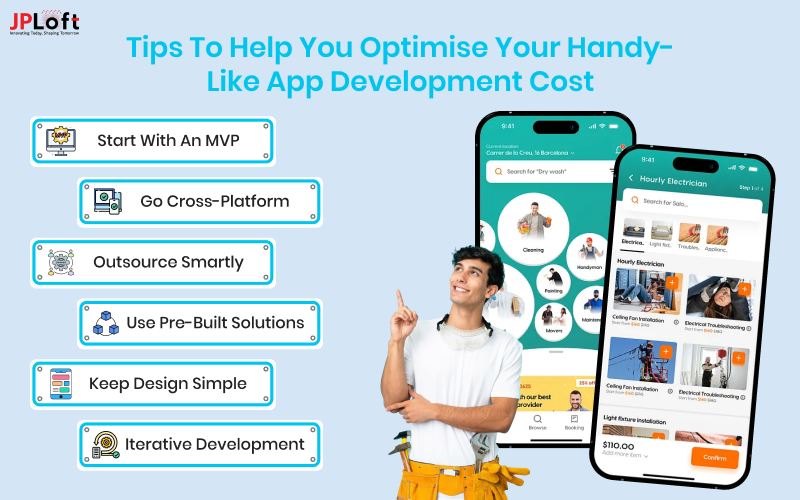
To help you stay within budget while still building a high-quality product, here are some practical tips to optimize your cost to build a home cleaning service app like Handy:
1] Start with an MVP
Instead of jumping straight into a full-featured app, consider building a Minimum Viable Product (MVP). Focus only on core features like user registration, service listings, bookings, and payments.
This not only reduces your initial cost to create a handyman app like Handy, but also gives you a real-world version to test with actual users before scaling.
2] Go Cross-Platform
If you’re planning to launch on both iOS and Android, using cross-platform frameworks like Flutter or React Native can save both time and money.
These tools allow developers to write one codebase for both platforms, helping you reduce the cost to develop an app like Handy significantly.
3] Outsource Smartly
Hiring a development team from countries like India can drastically reduce costs while maintaining quality. Hire dedicated developers who can build scalable, secure apps without burning a hole in your pocket.
4] Use Pre-Built Solutions Where Possible
Don’t reinvent the wheel. Leverage pre-built modules for common features like chat support, payment gateways, or location tracking. It cuts development time and lowers your cost to build an app like Handy.
5] Keep the Design Simple
While a sleek UI is essential, try to avoid overly complex or animation-heavy designs in the early stages. Stick to a clean, user-friendly layout that works efficiently without added development strain.
6] Plan for Iterative Development
Instead of launching everything at once, roll out features in phases. This allows you to spread costs over time and prioritize what matters most based on user feedback.
By following these tips, you can smartly manage your cost to develop a home cleaning service app like Handy, while ensuring you don’t compromise on quality or user experience.
While smart planning can significantly reduce your Handy clone app development cost, choosing the right business model is just as important for long-term profitability.
Let’s take a look at how top handyman apps are turning their services into successful businesses.
Business Models Behind Successful Handyman Apps
The secret behind the success of top handyman platforms like Handy doesn’t just lie in their clean interfaces or feature-rich apps, it’s their well-thought-out handyman business models.
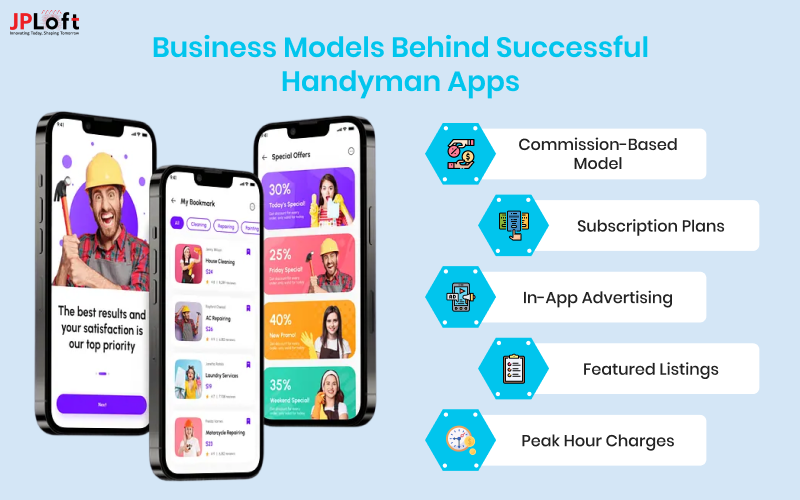
These models not only streamline services but also play a huge role in maximizing revenue. If you're looking to develop a handyman app like Handy, understanding these monetization strategies is crucial to building a sustainable business.
1. Commission-Based Model
This is the most popular model, followed by apps like Handy. A fixed percentage is charged on every successful transaction between service providers and customers.
It creates a win-win, service providers get work, and the platform earns without owning any manpower. This approach keeps the Handy-like app development cost in check while ensuring ongoing returns.
2. Subscription Plans for Service Providers
Another one of the proven handyman business models is offering premium subscriptions to service providers. These plans can offer perks like priority listing, better visibility, or access to more job requests. It gives tradespeople a reason to stay active on the platform and creates a stable, recurring revenue stream.
3. In-App Advertising
Top apps also capitalize on their user base by integrating non-intrusive ads. From promoting cleaning products to tools and home improvement services, in-app ads bring in extra revenue, further optimizing the cost to build a handyman app like Handy.
4. Featured Listings
Service providers can pay to get their profiles highlighted or listed at the top during user searches. This is a simple yet effective way to make your app profitable while keeping the user experience intact.
5. Surge Pricing or Peak Hour Charges
Just like ride-hailing apps, handyman apps can introduce dynamic pricing during peak hours. This motivates service providers to work during high-demand periods and boosts platform revenue.
Choosing the right business model or even combining a few is essential when you develop an app like Handy. Not only will it cover your mobile app development cost, but it’ll also set the foundation for long-term profitability.
Why Choose JPLoft as Your Handyman App Development Partner?
If you are planning to build the next Handy-like app, JPLoft is here to turn your vision into reality.
As a trusted handyman app development company, we specialize in creating scalable, high-performance apps tailored to your business goals. If you are targeting local service providers or aiming to launch a nationwide platform, our expert team ensures that your app is user-friendly, feature-rich, and market-ready.
From ideation and design to development, testing, and post-launch support, we handle it all. We also offer flexible engagement models to fit your budget without compromising on quality. With our experience in building on-demand service apps, we know what it takes to stand out in a competitive market.
Let’s collaborate and create a handyman app that not only meets today’s needs but grows with tomorrow’s demand
The Bottom Line
Creating a successful handyman app like Handy requires careful planning, the right tech stack, and a deep understanding of user needs.
From deciding on must-have features to choosing the right development team and business model, every step plays a role in determining the overall cost to develop an app like Handy.
While the estimated budget may range from $25,000 to $80,000, depending on complexity and scope, a well-executed app can offer high returns and long-term scalability.
Whether you're a startup or an established service provider, investing in a robust app can give your business the digital edge it needs. Ready to build your own Handy-like app? Now is the time!
FAQs
The cost to develop an app like Handy typically ranges between $25,000 to $80,000, depending on features, platform, tech stack, and development team location. Complex functionalities or custom UI/UX can push the price higher.
Key features include user registration, service provider profiles, booking & scheduling, secure payments, real-time tracking, push notifications, reviews & ratings, and customer support chat.
Yes! You can optimize development cost by prioritizing MVP features, choosing cross-platform development, using pre-built components, and outsourcing to experienced yet affordable teams.
Popular tech stacks include React Native or Flutter for frontend, Node.js or Laravel for backend, and cloud services like AWS or Firebase for scalability and real-time features.
On average, it takes 3 to 6 months to build a fully functional handyman app like Handy, including planning, development, testing, and deploymen





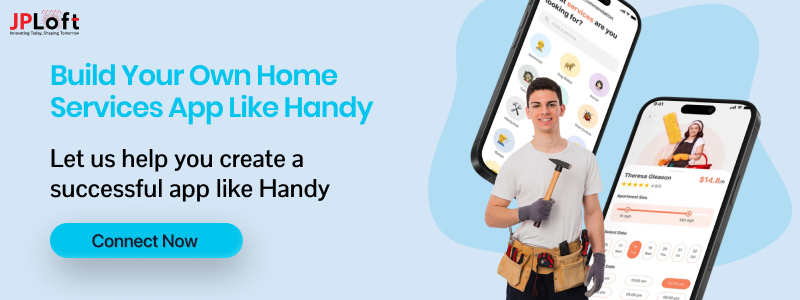


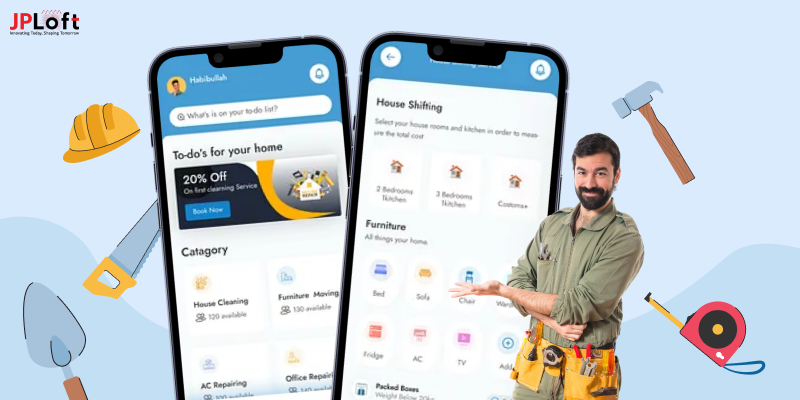
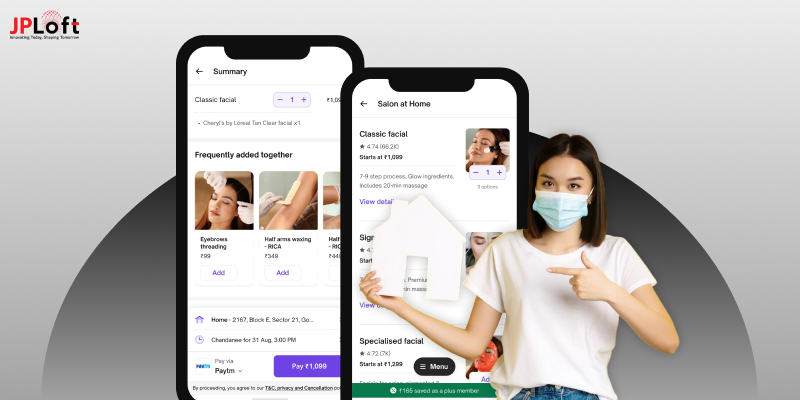
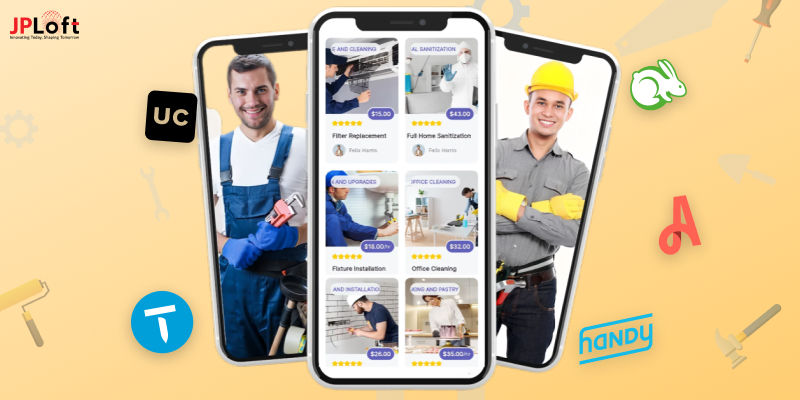



Share this blog